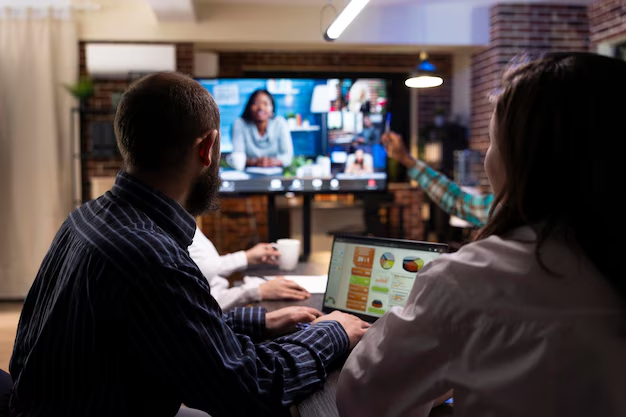The era of fully remote gatherings is fading, but the age of the hybrid event is firmly upon us. Companies have recognized the immense value of combining the energy of an in-person conference with the broad reach of a virtual one. This model promises the best of both worlds: global accessibility, reduced travel costs for many, and the irreplaceable value of face-to-face networking. Yet, many organizations are now grappling with the “hybrid event hangover”—a lingering sense that while the in-person component was a success, the virtual audience was treated as a secondary consideration, leading to a disconnected and lackluster experience.
The core challenge of the hybrid model is not technological; it’s experiential. How do you make someone watching on their laptop in another time zone feel as valued and engaged as someone sitting in the front row? Too often, the virtual experience is a passive one—a simple, static livestream of a stage designed for a physical audience. This approach doesn’t just fail to engage; it can actively alienate your remote attendees, diminishing the ROI of your event and potentially damaging your brand’s reputation for inclusivity and innovation.
To truly succeed, event marketers and planners must stop thinking of the hybrid event as a single event with a streaming add-on. Instead, it must be designed as two distinct but interconnected experiences, with a deliberate strategy to ensure the virtual audience is not just watching, but actively participating.
The Silent Disengagement of the Virtual Attendee
Failing to design for the virtual experience results in a form of silent disengagement that is difficult to measure but has significant consequences. Unlike an in-person attendee who is captive in a conference hall, the virtual attendee is in a constant battle for focus. They are one click away from their email inbox, a distracting Slack notification, or a competing work priority.
This fragile attention is compounded by several common experiential flaws in hybrid events. Poor audio quality from a stage microphone can make it difficult to understand speakers, forcing the virtual attendee to strain to keep up. Visuals, such as complex slide decks or on-stage demonstrations, are often designed for a large screen in a room and can be illegible on a laptop. Furthermore, the networking and interactive elements that are a primary driver of in-person value are frequently non-existent for the remote audience, leaving them feeling like spectators rather than participants. When the experience is frustrating or passive, the virtual attendee doesn’t complain; they simply tune out, minimizing the value they receive and the potential for them to become a lead or a brand advocate.
Designing an Inclusive and Engaging Digital Experience
Creating a compelling virtual experience requires a dedicated strategy that prioritizes clarity, interaction, and accessibility. It’s about ensuring the content is not only seen and heard but also understood and absorbed, regardless of the attendee’s environment.
- Invest in a Dedicated Digital Host or Moderator: One of the most effective strategies is to have a host whose sole responsibility is to engage the virtual audience. This person is not on the main stage but in a studio or breakout space. They can introduce speakers from a virtual perspective, manage the online Q&A, run polls, and facilitate digital-only networking sessions. This signals to the remote audience that they are a priority and have a dedicated advocate inside the event.
- Optimize Content for the Small Screen: Every visual element must be designed with the laptop or mobile screen in mind. This means using larger fonts on slide decks, employing high-contrast colors, and ensuring that any on-stage video or demonstration is also captured with a dedicated camera feed that can be shown full-screen to the virtual audience. Don’t make them squint to see what’s happening; deliver a clear, unobstructed view.
- Create Unique Virtual Networking Opportunities: Acknowledge that you cannot replicate the serendipity of an in-person coffee break. Instead, create structured networking opportunities designed specifically for the virtual format. This can include themed breakout rooms, moderated “ask me anything” sessions with speakers, or using smart networking platforms that match attendees for brief one-on-one video calls based on shared interests.
The Foundational Role of Subtitling in Audience Engagement
While the strategies above enhance the interactive elements of an event, the core experience still relies on the clear delivery of information. This is where a foundational, often overlooked tool becomes essential for ensuring a truly inclusive and engaging virtual experience: professional subtitling.
Often considered primarily an accessibility feature for the hearing impaired, real-time subtitling (or live captioning) is one of the most powerful engagement tools for the entire virtual audience. Its strategic benefits are threefold:
- It Guarantees Comprehension: Even with the best audio equipment, sound quality can be inconsistent. A speaker might turn away from the microphone, or an attendee’s internet connection might momentarily dip. Subtitles provide a constant, stable anchor for the information being delivered, ensuring that no key insights are missed due to technical glitches or accents that may be difficult for a global audience to understand.
- It Caters to the Modern Viewing Environment: Your virtual attendees are not in a quiet auditorium. They may be in a noisy open-plan office, a bustling coffee shop, or at home where they need to keep the volume low. Subtitles empower them to consume the content effectively regardless of their environment, allowing them to remain fully engaged even when they can’t listen with headphones.
- It Boosts Focus and Information Retention: Reading along while listening is a proven method for improving focus and retaining information. For a virtual attendee battling constant digital distractions, subtitles provide a powerful visual cue that keeps their attention locked on the content. It turns a passive listening experience into an active reading and listening one, significantly deepening the impact of your presentations.
In the complex world of hybrid events, it’s the thoughtful details that separate a frustrating experience from a remarkable one. By implementing professional subtitling, you are building a foundational layer of clarity and inclusivity that benefits every single virtual attendee. You are not only making your content accessible, but you are also ensuring it is engaging, understandable, and memorable, maximizing the return on your event investment and solidifying your reputation as a forward-thinking organization.


